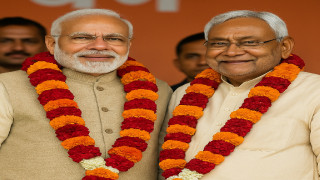
Google Maps/Manish Sharma
Sabke Ram: Telangana Chief Minister Revanth Reddy recently drew parallels between Ayodhya's Ram Temple and the revered Sita Ramachandraswamy temple in Bhadrachalam, shedding light on the rich mythological tapestry woven around the latter. As we explore the epic tale of this sacred abode, discover why it holds the moniker 'Ayodhya of the South.'
Nestled on the banks of the Godavari River, the Sita Ramachandraswamy temple holds profound mythical relevance. At its core is the worship of Vaikuntha Rama, a unique form of Lord Vishnu that emerged to honor a devoted soul's plea. The deity, depicted with four arms, features Lord Ram, accompanied by his consort Sita and loyal brother Lakshman.
Legend has it that in his haste to manifest as Lord Ram, Vishnu retained his divine form with four arms, unaware of the mortal context. This distinctive manifestation became known as Vaikuntha Rama, enshrined in the Bhadrachalam temple.
A captivating legend revolves around Bhadra, a devotee whose life transformed from stone to human under Lord Ram's grace. Expressing gratitude, Bhadra meditated on the Godavari's banks, longing to meet his divine benefactor. During Ram's exile in the Dandaka forest, the deity, unable to pause, promised to return later.
Years elapsed, and Lord Vishnu fulfilled his commitment, appearing with Sita and Lakshman. The sacred spot was christened Bhadrachalam, commemorating Bhadra's unwavering devotion.
In another enchanting narrative, Pokala Dhammakka dreamt of a concealed divine statue in the forest. Actively searching, she unearthed an icon of Lord Ram within an anthill and, with the villagers' assistance, enshrined it as a revered deity.
The temple's inception in the 17th century is attributed to Bhakta Ramadasu, alias Kancherla Gopanna. A tehsildar during the Golconda Sultanate, he collected taxes and, driven by his devotion to Lord Ram, aspired to build the temple. Despite imprisonment for alleged fraud, Ramadasu's unwavering spirit endured, with legends suggesting divine intervention secured his release.
The Bhadrachalam temple stands as a testament to devotion, legends, and communal efforts. Bhakta Ramadasu's sacrifice, Pokala Dhammakka's dreams, and Bhadra's transformation intertwine to create a cultural and spiritual landmark. As Telangana's 'Ayodhya of the South,' the temple beckons devotees and enthusiasts alike to witness its profound history and unique features, showcasing the vibrant fabric of myth and faith.













Copyright © 2025 Top Indian News
